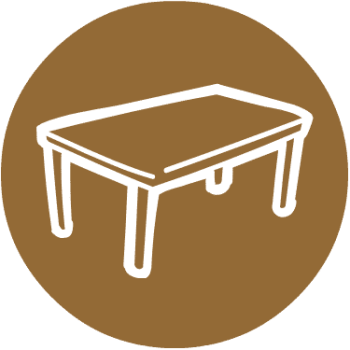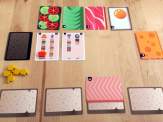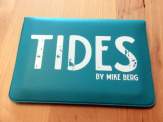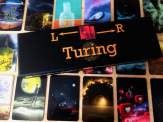| Release Date: 2025 | Players: 1-4 |
| Designer: Dominik Schönleben, Francesco Grothe | Length: 45-90 minutes |
| Artist: Consuelo Pecchenino, Robert Herzig | Age: 10+ |
| Publisher: Hopeful Games | Complexity: 3.0 / 5 |
| Plastic (by weight): unknown | Air (by volume): unknown |
It seemed like a normal day until you listened to the voice message from your friend. It sounded urgent and like their life was in danger. They wanted to meet you at this club. You tried to call them back to find out more, but nobody answered. You started to worry and fear the worst, but you plucked up your courage. You just wished there still was Neon Hope by Francesco Grothe and Dominik Schönleben from Hopeful Games with illustrations from Robert Herzig and Consuelo Pecchenino.
Listen to the Audio Version
Intro Music: Bomber (Sting) by Riot (https://www.
Music: “Cityscape” by AShamaluevMusic.
Website: https://www.
Music: “District” by AShamaluevMusic.
Website: https://www.
Music: “Megacity” by AShamaluevMusic.
Website: https://www.
I never got on with games from the Exit series. They always felt too much like doing the crossword and puzzle section in the newspaper, but under time pressure, as if you were sitting an exam instead of relaxing on a Sunday morning. It was only when I played Adventure Games: The Dungeon that my love for escape-room-style games was rekindled. So when I heard that Neon Hope worked in a similar way, I was really excited.
Cards, More Cards and Some Tokens
The game allows you and up to three other people to explore the dystopian future that the game is set in and uncover mysterious goings-on that may, or may not, be linked to a giant conspiracy. Taking on the roles of friends of someone who clearly got caught up in rather serious government-level espionage activities, you go in having no idea what’s happening. All you know is that you have to meet your friend in a nightclub, but when you arrive, they are nowhere to be seen. And so starts the mystery that you have to deconstruct.
Neon Hope is really just a giant deck of cards representing locations, people, enemies and events. Additionally, each of the possible four characters comes with a unique deck of cards of their own, representing support actions they can use to help in the adventure. There are also various tokens and the character standees, but the main gameplay centres around the cards.
Each character is unique, not just because of their unique deck, but also their personality traits. You can think of this like the different characters you can choose from in Pandemic. It’s important that every player gets to grips with what their chosen character is good at and how everyone can help each other. If you can’t work that out, you’re going to struggle.
Getting to know your character takes a while. That’s why it’s nice that Neon Hope starts relatively simple. Your first task is to speak to the people in the nightclub to glean information about your friend’s whereabouts. As you do so, you gain tokens that improve your characters’ abilities. You also quickly learn which character should do the talking and who should let their fists talk instead.
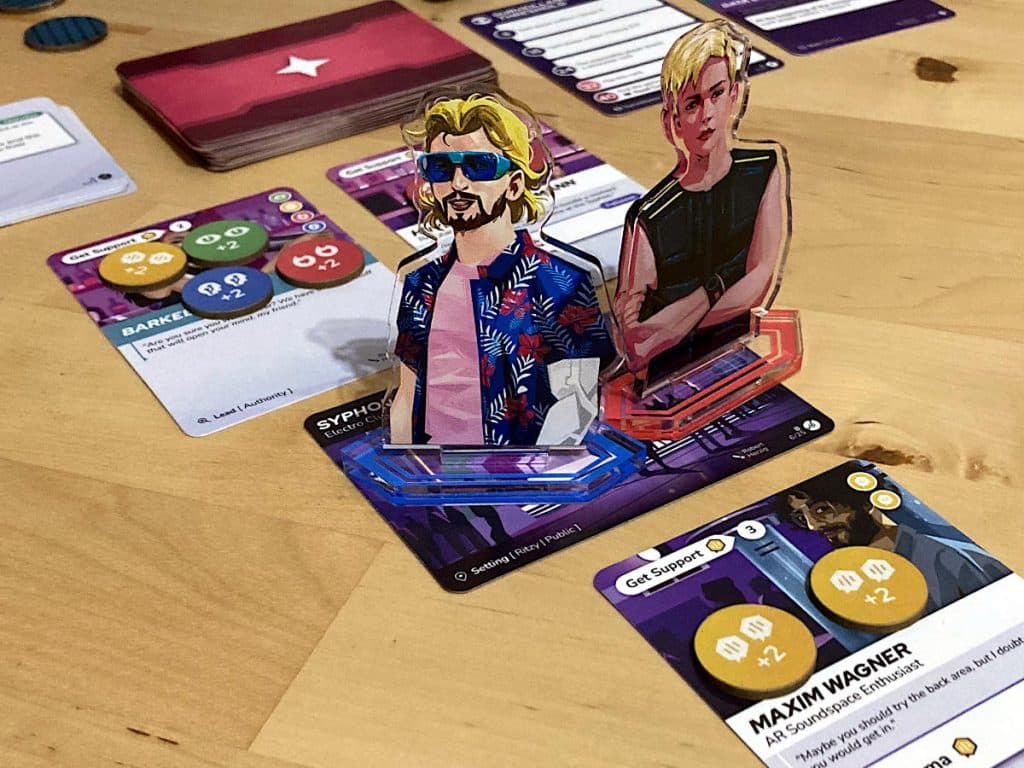
Flipping Cards
However, before you start, you need to set up the game. In the demo version I was sent, which only consisted of part of the first scenario, you literally just read the top card of the relevant deck and follow the instructions. That’s not quite all you have to do, but the rulebook shows you what you need to set everything up.
So you start at a location, represented by a card, with a number of people there too, also represented by cards. You can interact with each card in play by passing a test against one of your personality traits. If you want to speak to a person, you have to pass a charisma test, for example. Depending on your cards, you may be able to increase your chances of passing the test. Then you flip over a random token that further influences your trait, improving it or making it worse. If you pass the test, you usually gain tokens that benefit you in some way.
Once you’ve interacted with a card enough times, it gets flipped over, which moves the story on. For example, once you’ve spoken to the bartender a few times and gained their trust, the card flips and now they are willing to divulge more information about what’s going on.
Some cards will ask you to find the next story card that tells you what’s happening and often instructs you to set up the next location that you can explore. Of course, some cards represent dead ends, but you wouldn’t expect anything less from a cooperative game.
Fighting enemies works very similarly, but instead of flipping the enemy card when it’s defeated, it gets discarded.
The Story Unfolds in Front of Your Eyes
I really love how that works. You can physically see how the story is evolving. As cards get flipped, new locations are added and your character gains tokens and evolves, you always find out a bit more information. You really feel like you’re in the world of Neon Hope. You start out knowing nothing and believing your friend is just a normal person like everyone else. Then you find out that your friend is in deep trouble, but you don’t know what exactly that means. As you carry on playing, you discover more and more information that helps you to puzzle everything together.
That’s where Neon Hope really shines. The story-writing in the demo copy I’ve played is really good. Assuming it continues like this until the end, you’ll be in for a gripping adventure that leaves you wanting more. You will be desperate to play just one more scenario so you can see what happens next. If it delivers on its promises, then Neon Hope will be like binge-watching your favourite TV series.
In fact, that’s how the game represents itself: episodes of a TV show. While I don’t know how exactly you save the game, it sounds like your characters evolve and take with them the tools they bought and the knowledge they gained from episode to episode. Assuming saving and restoring the game state between plays is quick and easy, I’m excited to play the whole story at some point.
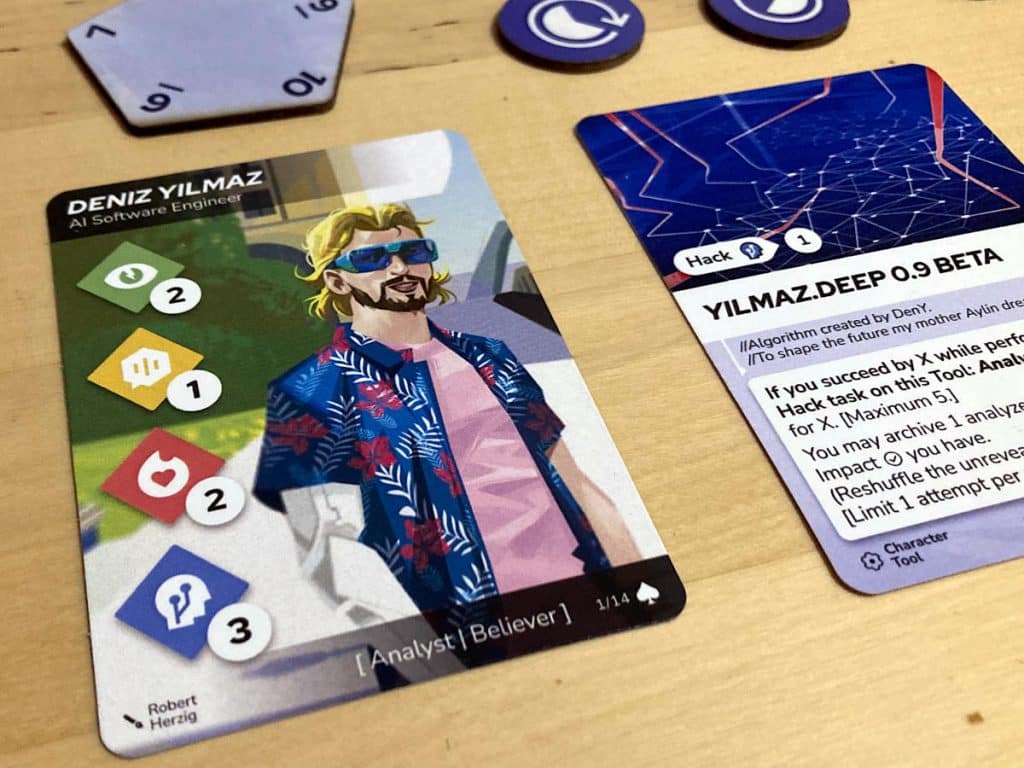
Rulebook Complications
Of course, there is a lot more that happens in Neon Hope, but I don’t want to spoil too much in this review.
What I can say is that the rulebook doesn’t work for me. It is great if you read it from beginning to end and can remember everything. However, when you want to quickly refer back to something during a game, it’s not easy to find rules. I had a few occasions during my first play where I was confident that I had read the relevant rule, but just couldn’t find it again.
In fact, when I first played Neon Hope, I got two rules wrong. It didn’t drastically change the outcome, but it did annoy me. I am worried that other people will see it as more of an issue. Given that Neon Hope is like an escape-room game, in that you can’t really play it a second time, you can’t just go back and play again with the correct rules.
I feel that it would be better to keep the rules to a minimum, with the rest being taught as you play the game. For example, there is no need to explain how to deal with enemies. You can easily explain that on a scenario card that players are instructed to read as they set up the next location. That would make Neon Hope more like a campaign game that adds more rules as you go along.
So while I’m really excited about this game, now that I know the rules, that initial hurdle may sour the experience for some people. Personally, I’m really tempted to buy the game when it comes out and see how the story evolves. I want to know what my friend got involved in and if we can help them.
For behind-the-scenes updates, branded merchandise, and more, please support the blog.
Useful Links
- Neon Hope: https://neonhopegame.
com/ - Rulebook: https://neonhopegame.
com/ wp-content/ uploads/ 2025/ 01/ NEON-HOPE-Quickstart-Rules-A5-digital-V1. 1. 1. pdf - Kickstarter campaign: https://www.
kickstarter. com/ projects/ hopefulgames/ neon-hope-cyberpunk-meets-solarpunk - Hopeful Games: https://hopeful-games.
com/ - BGG listing: https://boardgamegeek.
com/ boardgame/ 421246/ neon-hope - Adventure Games: The Dungeon review: https://tabletopgamesblog.
com/ 2022/ 06/ 25/ adventure-games-the-dungeon-saturday-review/ - Pandemic review: https://tabletopgamesblog.
com/ 2020/ 01/ 18/ pandemic-saturday-review/
Transparency Facts
I feel that this review reflects my own, independent and honest opinion, but the facts below allow you to decide whether you think that I was influenced in any way. Please also read my Ethics Statement for more information.- I was given a free review copy of this game by the publisher.
- At the time of writing, I have not received financial support from the publisher or anyone working on their behalf.
Audio Version
Intro Music: Bomber (Sting) by Riot (https://www.
Music: “Cityscape” by AShamaluevMusic.
Website: https://www.
Music: “District” by AShamaluevMusic.
Website: https://www.
Music: “Megacity” by AShamaluevMusic.
Website: https://www.
Playlist
These are the songs I listened to while I was writing this review:
